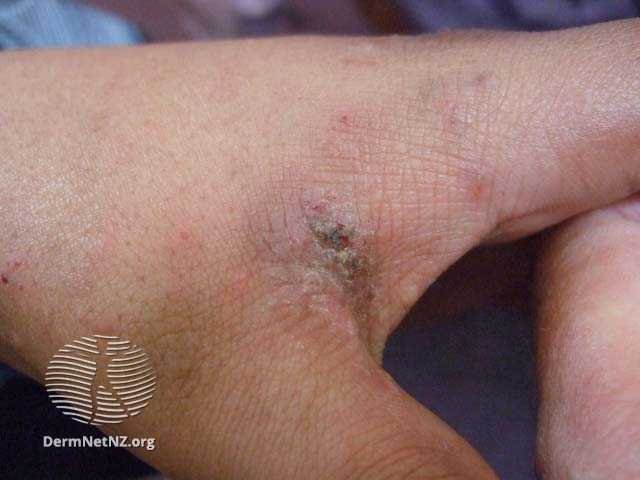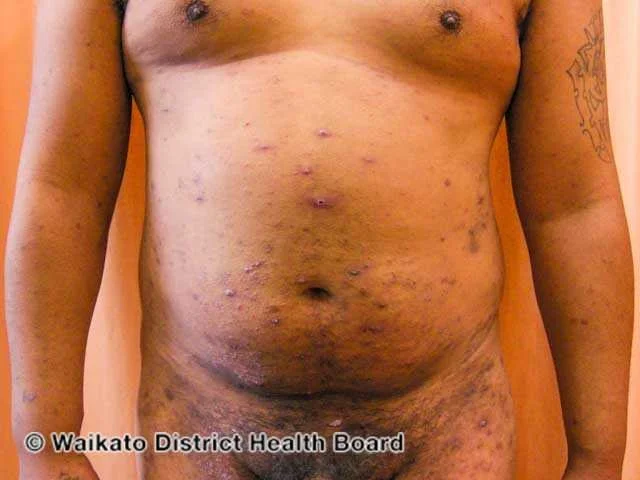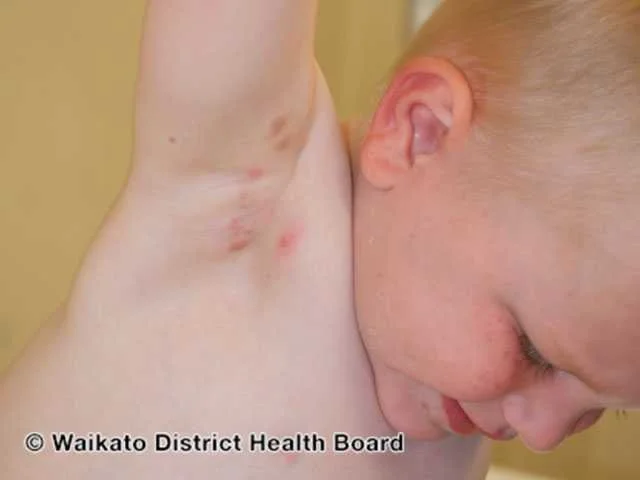
Scabies
An example of scabies burrows in the web space of the hand with crusting most likely from itching.
Credit: DermNet NZ
What is scabies?
Scabies is a skin infestation caused by a tiny mite known as Sarcoptes scabiei. These mites burrow into the skin, causing intense itching and a pimple-like rash. The itching tends to be more severe at night, and the condition can spread easily among close contacts or through infested bedding or clothing.
What causes scabies?
Scabies is spread through close physical contact with an infected person, which makes outbreaks common in crowded living conditions. It can also be contracted by using infested bedding, towels, or clothing. The mites responsible for scabies are too small to be seen with the naked eye but leave a telltale burrow trail in the skin.
What are the symptoms of scabies?
The primary symptom of scabies is intense itching, particularly at night. The itch is accompanied by a rash that can look like tiny blisters or pimples. As the mites burrow and lay eggs in the skin, thin, irregular burrow tracks made up of tiny blisters or bumps can also appear. Commonly affected areas include the webbing between fingers, wrists, elbows, armpits, waist, and the buttocks region. It's crucial to seek treatment, as scratching can lead to secondary bacterial infections.
How do I treat scabies?
Treating scabies usually requires prescription medications that kill the mites and their eggs. Over-the-counter treatments are generally not strong enough. Commonly prescribed treatments include:
Topical permethrin cream
Oral ivermectin, especially for severe cases or when topical treatment fails
Crotamiton cream or lotion
Sulfur ointment, particularly for those who cannot use the above treatments
After starting treatment, itching may continue for a few weeks. Additionally, all bed linens, clothing, and towels used by the infected person should be washed in hot water.
How do I prevent scabies?
Preventing scabies requires a combination of personal hygiene and environmental measures. Avoid close physical contact with an infected person and their belongings. Wash bedding, clothing, and towels in hot water and dry on high heat. Items that cannot be washed can be sealed in a plastic bag for at least 72 hours, as mites generally cannot survive beyond this period without a human host. Regularly vacuuming living spaces can also help reduce the risk of transmission.
Scabies often is accentuated around the bellybutton and genital area.
Credit: DermNet NZ
Babies and children are also susceptible to scabies.
Credit: DermNet NZ



